Dynavap Vaporizers are a fully analog weed vape designed for use with dry herb and concentrates. These palm-sized vapes are some of the most efficient dry herb vaporizers available. They’re most commonly heated using a small torch lighter or an induction heater.
Dynavap vaporizers are a battery-free and smoke-free way to consume cannabis.
Table of Contents
2025 Dynavap Vaporizer Lineup
The Dynavap vaporizer is available in several configurations or models, and its parts are mostly compatible, interchangeable, and upgradable. Beginners may choose one of the preconfigured Dynavap vaporizers or build a custom vape.
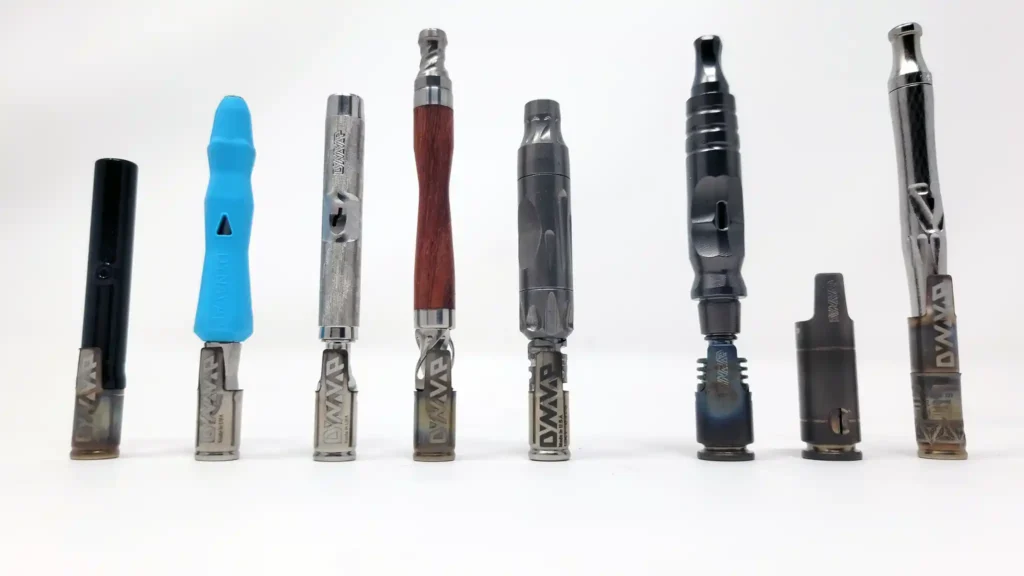
The 2025 Dynavap Lineup. From Left to Right – G3, B, M7, Woodwynd, Vongi, HyperDyn, THC cap, UniDyn.
Dynavap G3 – $35 – The newest all-glass Dynavap is the simplest and cheapest vaporizer Dynavap offers. This vape comes with a travel tin and a torch. The glass stem is a single piece, featuring a built-in screen. This Dynavap tastes slightly better due to the glass bowl and vapor path, but its thermal performance isn’t as aggressive as that of the metal versions.
The Dynavap G3 is the best Dynavap for beginners looking to dabble in the format. This vape is great for tasting terps and making your herb go a long way.
Click Here to see my G3 Review
Dynavap B – $39 – The B stands for Budget, Beginner, and Bong-friendly. The Dynavap B has a special tip that can be heated without rotating and is designed for single heat-up extractions. The Dynavap B has an all-stainless steel vapor path and a soft silicone stem and mouthpiece. See my Dynavap B Review
Dynavap M7 – $79 – The standard all-metal basic Dynavap. The Dynavap M is a stainless steel device, featuring a stainless steel tip, condenser, stem, and mouthpiece. See my Dynavap M+ Review
Dynavap Woodwynd – $149 – Dynavap made the Woodwynd to feel light, sleek, and agile. Its wooden stem has a sexy curvature and slender profile that feels amazing to hold and use. Its airport is tuned tighter than the typical Dynavap, and its tip is optimized to be extremely thermally responsive.
The Woodwynd is one of my favorite Dynavap vaporizers because it’s so slim and sleek. The airport is tuned for effortless vaping, eliminating the need to find it or fumble with finding the hole.
See my full Woodwynd Review
Dynavap Vong – $160 – The Vong is a water-bong-compatible Dynavap with a titanium mouthpiece, crown, and wooden midsection. A titanium condenser connects the mouthpiece to the titanium tip. The Vong is compatible with 10mm and 14mm female glass joints.
Dynavap UniDyn – $129 – The UniDyn is Dynavap’s attempt at a micro-ball vape. This vape uses a special cap that is longer and filled with balls. The UniDyn ball vape has significantly more convection power than the standard Dynavap, but it’s also harder to use.
Dynavap HyperDyn – $229 – HyperDyn has a special tip and a larger capacity bowl. The HyperDyn is similar to the Vong in that it fits water pipes natively, but its tip and cap are the fundamental flagship features. The larger-capacity tip features a bigger bowl and a thicker cap, providing significantly more thermal mass. The HyperDyn is a heavy-hitting Dynavap.
The Additional HyperCap – $79 – Converts the HyperDyn to an even more powerful ball vape.
Dynavap | Bowl Capacity | Material | Tip | Price |
|---|---|---|---|---|
G3 | .05-.2g | Glass | Glass Unibody | $35 |
B | .05-.15g | Silicone + Stainless Steel | SS Half Bowl | $39 |
M7 | .05-.25g | Stainless Steel | Stainless Steel | $79 |
WoodWynd | .05-.25g | Wood + Titanium | Ti Helix | $149 |
Vong | .05-.25g | Titanium | Ti Vong Tip | $160 |
UniDyn | .1-.2 | Stainless Steel | Stainless Unibody | $129 |
HyperDyn | .1-.3 | Titanium | Hyper Tip | $229 |
Use code VAPEZONE at Dynavap to save 10%
CLICK HERE to shop Dynavap
Potv also sells Dynavap here
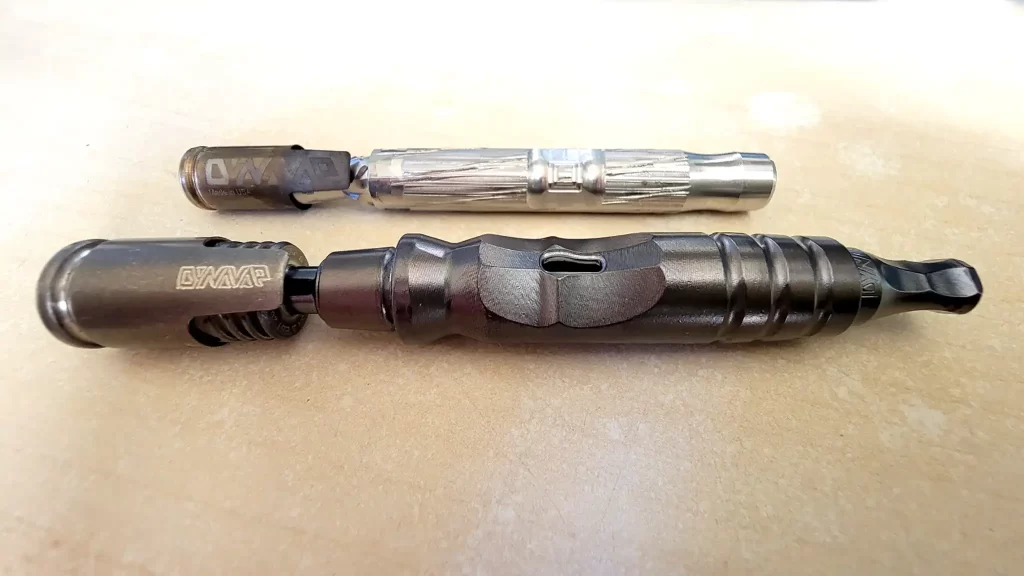
The HyperDyn is an XL Dynavap experience. It has a larger bowl and a thick titanium cap. This is the Dynavap for daily users with a higher tolerance. The Hyperdyn bowl holds .25g. and is a heavier hitting experience than the standard Dynavap. See my Hyperdyn Review or go buy one $229.
Dynavap BB Stems – The BB stems are all-glass stems with no condenser. Watch as your vapor travels through the glass nipples and balls before hitting your lips or natively fit water pipe. The BB stems are available in 3 and 6 BB options, with the BB3 being the cheapest Dynavap starter vape at $63.
Which Dynavap Vaporizer is Right for YOU?
If you’re a beginner, the new G3 is an exceptional value. It comes with a torch and a case for $35. The G3 tastes better than the other Dynavap vapes, too, because of its all-glass design. The G3 is only $35.
The M is their most popular vaporizer. The $79 stainless steel vape will essentially last forever. This vape is more durable than the glass G3, and the vape itself has multiple configurations. The bowl can be configured to a half-bowl setting, and the condenser tube can be adjusted to throttle intake air from the carb hole.
The tip from the M7 can be removed and reused on other stem configurations. Only the cap from the G3 is reusable.
Choose the G3 if you’re a flavor chaser. The rest of them will pretty much taste the same.
The Vong has a thick and blunt-like feel in the hand. It’s fun to hold and pass like a blunt, especially when equipped with an Armored Cap or Hyper Tip.
Woodwyn is the most elegant experience, and its tip is the most thermally responsive. It heats up and cools down faster than the other Dynavap tips. This vape has a smaller and tighter airport than the other stems. Overall, the airflow is the same, but this vape mixes less fresh air in with the vapor and requires less fluttering of the carb.
HyperDyn has a bigger bowl. If you’re already a daily smoker, you may feel inclined to start with this vape over the others. Ignore those feelings unless you’ve tried these vapes. I’ve been vaping all day, every day for 10 years, and I can still catch a great buzz on the G3, B, and M vaporizers.
Use code VAPEZONE at Dynavap to save 10%
CLICK HERE to shop Dynavap
Potv also sells Dynavap here
Dynavap Ball Vapes
In 2025 Dynavap joined the ball vape movement and added multiple ball-filled caps to their product line.
Ball Vapes get their name from the ruby balls filling the heater. The balls act as thermal mass and high surface area convection heater as air is pulled through them, resulting in never-before-seen dry herb vaporizer performance.
Portable ball vapes are a very new territory, and Dynavap is still developing its ball vapes.
The THC is a ball cap option for the HyperDyn or Hyper Tip. This $79 cap turns the Hyperdyn into a ball vape. It’s not perfect, but with practice, it can deliver excellent vapor. It works best on a bong because the vapor can get quite hot.
The Unidyn is their 2nd ball vape option. This vape has a unibody with a built-in tip. The baller cap is not armored like the THC, and performance is inconsistent.
Ball vapes are still evolving. Portable ball vapes can’t compete with the airflow, power, and flavor of desktop ball vapes.
Click here to see my complete guide to Ball Vapes.
Anatomy of the Dynavap
The Dynavap, at its bare minimum, is essentially the Dynavap tip and Dynavap Vapcap connected to a tube, or stem, for vapor delivery.
The Dynavap Tip is the extraction chamber. Herbs or botanicals are loaded into this bowl-shaped chamber made of metal. The Dynavap Vapcap, or cap as we’ll refer to it casually, fits tightly over the tip, sealing the extraction chamber.

Many Dynavap models utilize a condenser tube within the inner diameter of the stem. The condenser tube directly connects the mouthpiece to the extraction chamber.
The airport hole(s), depending on the stem, provide the option to feather a finger over the airport and introduce fresh air to mix with the vapor within the extraction chamber.
How the Dynavap Works
The Vapcap Tip can hold as little as .01 or as much as .25 ground cannabis or whole chunked nug.
With the Vapcap placed over the tip, heat is applied only to the sidewalls of the cap. Small butane torches and induction heaters are the typical heating sources, but a traditional lighter will work in a pinch.
As the tip is being heated, listen for the *CLICK* as the extraction chamber and the herb within it reach vaporization temperature. When you hear the bi-metal disc in the cap make its *CLICK CLICK* sound, it’s ready to inhale and deliver vapor.
The Dynavap cap contains two bi-metal discs. As the cap is heated, the bi-metal discs’ expansion causes them to bend and click, causing the audible *CLICK* sound that this vape uses as a thermal indicator.
Since there are two discs, you should hear two clicks. Depending on your heating technique, they may be very close together or farther apart.
Each cap is slightly different, and the temperatures of the clicks may vary. However, they’re all very similar!
Use code VAPEZONE at Dynavap to save 10%
CLICK HERE to shop Dynavap
Potv also sells Dynavap here
Dynavap Stem Upgrades & The Dynaverse
Dynavap is a subculture that has its own market of third-party accessories and upgrades. George and his team at Dynavap have always supported the community and openly allowed the extension of the Dynavap tip.
Early in the Dynavap Era, woodturners within the dry herb vape enthusiast community were among the first to craft custom Dynavap stems. Makers like Phatpiggie, Ed’s TNT, and KG Woodcrafts paved the way for dozens of Dynavap stem makers to exist today.
Aftermarket Dynavap stems can give your vaporizer a one-of-a-kind appeal and take vapor performance to the next level.
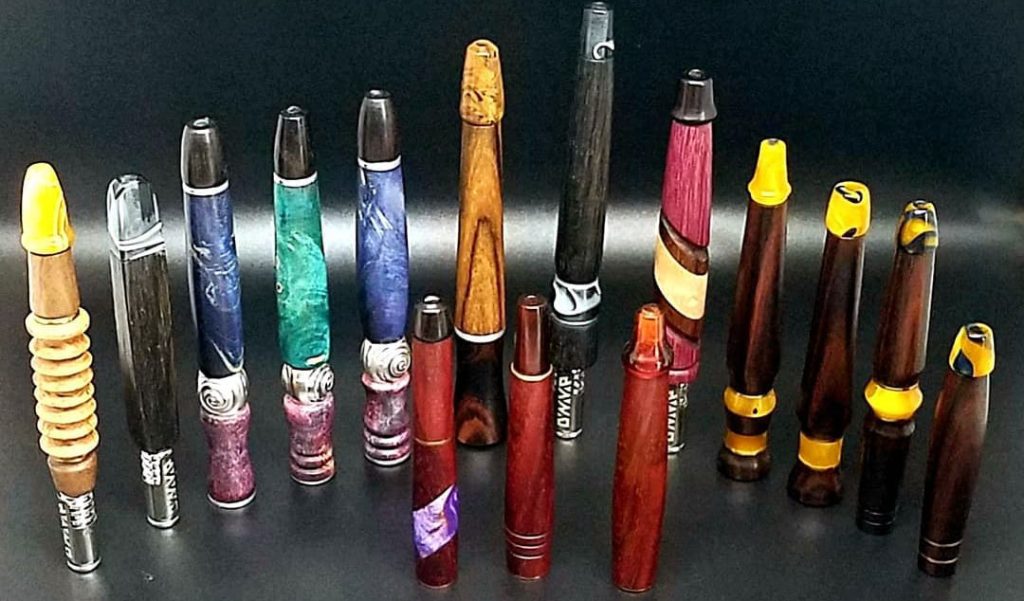
Wooden stems are popular due to the endless customization and options. Some wooden stems may add a touch of wood flavor to the vapor, while others are made of titanium or stainless steel for a pure flavor.
Glass stems deliver the purest flavor and a slightly different vapor due to the absence of a condenser tube. They cool the vapor and often utilize glass nipples for even more cooling. Many glass stems use a native male glass joint as the mouthpiece to make them compatible with bongs and water pipes without any additional adapters.
Titanium Dynavap stems are a relatively newer frontier in the aftermarket Dynavap space. Special cooling stems like the Simrell Vortex and the Mad Heaters REVOLVE stem bring vapor cooling and style to the next level. Anodized titanium adds another colorful level of artistic expression to add to the list of stem options.
See the Full List of Dynavap Stem Makers
Torch Selection & Heating Technique
Choosing the right torch for your Dynavap is essential to a satisfying experience. Small butane torches are available in single-jet, dual-jet, and triple-jet flames, each with its own strengths and weaknesses for the Dynavap.
Single-flame torches are the most common and recommended for the Dynavap Vapcap. Single Flame torches provide precision heating, allowing you to heat the extraction zone accurately and efficiently without premature clicking*.
** Premature Clicking – When the cap end of the Dynavap is heated instead of the extraction zone, and the cap *clicks* before the herb is at vaporization temperature.
While single flame torches excel in precision and fuel efficiency, they suffer in environments with wind or even gentle breeze. When vaping outside with a Dynavap, I highly recommend using a dual or triple-flame torch.

Multi-Flame Jet Lighters provide a larger pocket of hot flame and can heat the Dynavap tip considerably faster than a single flame lighter. These lighters are more powerful and help compensate for cold or windy conditions.
Dual Flame Lighters provide double the heat of a single flame without excessive fuel and heat waste. Two flames next to each other provide a nice pocket of heat when heating the tip.
Triple and quad Flame Lighters produce a lot of heat and give a really large heating zone. They’ll heat a Dynavap tip fast, even in cold and windy environments, but these torch lighters also burn through fuel much faster. Expect these lighters to be larger than the rest while refilling daily.
Dynavap Induction Heaters
Induction heaters make heating your Dynavap easy anywhere. Dynavap induction heaters are available in battery-powered portable versions as well as plug-in wall-powered.
In 2023 Dynavap stopped producing their own Induction Heaters and have only been selling the Wand by Ispire.
There are still a few 3rd party accessory makers selling induction heaters for Dynavap, but the Induction Heating trend seems to have stalled.
Dynavap Maintenance & Care
Cleaning and maintenance vary depending on the Dynavap model and configuration.
With regular daily usage, you’ll need to clean your Dynavap and its vapor path on a monthly-ish basis.
The easiest way to clean the Dynavap Vapcap is to remove the tip and cap from the stem and clean the individual parts separately.
The tip, stem, and condenser can be soaked in isopropyl alcohol, but soaking is not required.
Isopropyl alcohol will degrade the silicone o-rings! Remove the o-rings if you’re going to soak in alcohol.
In the event of accidental combustion, I will often q-tip out the tip and run a rolled-up paper towel through the condenser as a quick clean. I find the burnt combustion taste goes away after a couple of fresh bowls.
Use code VAPEZONE at Dynavap to save 10%
CLICK HERE to shop Dynavap
Potv also sells Dynavap here
Who am I, and why should you trust me?
I’ve been obsessed with dry herb vaporizers since I first learned about them in 2012. I started testing and reviewing weed vapes in 2015, and within two years, it became my full-time career. I’ve tested and reviewed nearly 1,000 different vaporizers, and I’m the industry’s leading expert on cannabis vaporizers.
See how the Dynavap ranks on my Best Portable Vaporizers page.






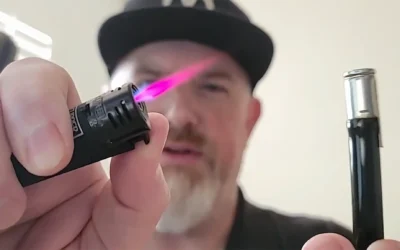
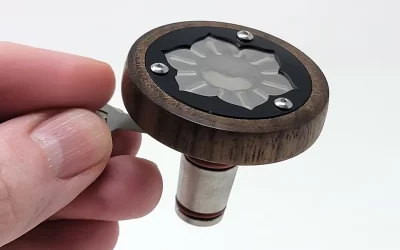
Just wondering what tip you’ve been using. Not sure which one to try next. You like the helix?
is there any particular “burn off” for a brand new Dynavap?
I don’t always do a burn-off, but I recommend it. I usually clean everything with a q-tip and alcohol prep pad before using